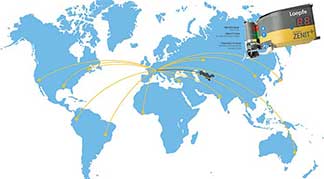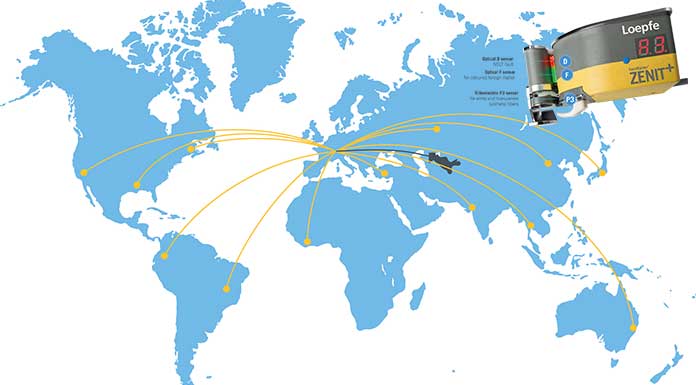
In 2017, Uzbekistan produced 2.7 million tons of raw cotton, for 2018 this amount is planed to increase by some 10 %. During the last decade, there have been enormous efforts to expand the domestic content along the whole value chain of textile production.
Today, the amount of raw cotton, which is processed in Uzbekistan, is around 40 % of the total harvest. The government is aiming to increase this value up to 100 % in the next years, in order to generate added value within the domestic economy. Main measures will be the support of investments in spinning mills and other textile processing industries. The investment program for “Further development of the textile and garment and knitwear industry” supports several projects, which are aiming to produce finished export-oriented textile garments and knitwear products with high added value. The projects include the modernization, technical, and technological re-equipment of existing and the founding of new enterprises in textile industry.
Quality expectations of Uzbekistan yarn industry increases: cotton yarn production is developing rapidly
Today, the 162 spinning mills – ring spinning and open-end spinning – produce in large part cotton yarns. The typical production spectrum comprises carded yarns Ne 20 – Ne 30 and combed yarns Ne20 – Ne 40. As Uzbekistan is a major cotton producer, 100 % of the raw cotton processed in the spinning mills originates from inside the country. The main export markets for textile product are Russia, China, and Turkey. As the vertical range of production increases, the necessity for quality control becomes obvious. Yarn clearers are among the typical technologies, which are needed to leverage the production.
Over the last years, Uzbekistan is considered the fastest growing market in spinning worldwide. The number of new spinning facilities – new enterprises and expansion of existing spinning mills – shows a growth rate of 30 % per year. Spinning is by far the most booming sector in Uzbekistan. Therefore, the demand for high-end yarn clearers is huge. Especially the detection of foreign matter and the clearing of polypropylene fibers, originating from bale packaging, becomes an issue in the spinning mills.
Quality expectations of Uzbekistan yarn industry increases: optical technology in yarn quality control
In the past couple of years, Loepfe – the market leader in optoelectronic quality control in winding – has definitely improved its market share with consistent new orders. In 2018, Loepfe consequently experiences a strong demand for its YarnMaster yarn clearers. For example, L.T. International, which is one of the largest spinning mills in Uzbekistan; equipped 68 winding machines from Schlafhorst with the newest Loepfe ZENIT+; with foreign fiber detection. The well-proven optical technology of these innovative yarn clearers is considered the best choice; for difficult environmental working conditions in Uzbekistan.
LOEPFE has focused on the development and production of optical yarn clearers in Switzerland for half a century already. As the leading supplier of optical yarn clearers, Loepfe’s YarnMaster covers all requirement profiles in the winding process. This makes Loepfe the competent partner for all spinning mills world-wide.
The functions of all three known sensor technologies have been perfectly optimized; and tuned to each other on the YarnMaster ZENIT+ yarn clearer. Optical yarn clearers provide constant measuring results. Changing ambient conditions do not at all influence the reliability of YarnMaster ZENIT+. The quality cuts, depending on the desired quality and the efficiency of the winding machine, remain constant.

